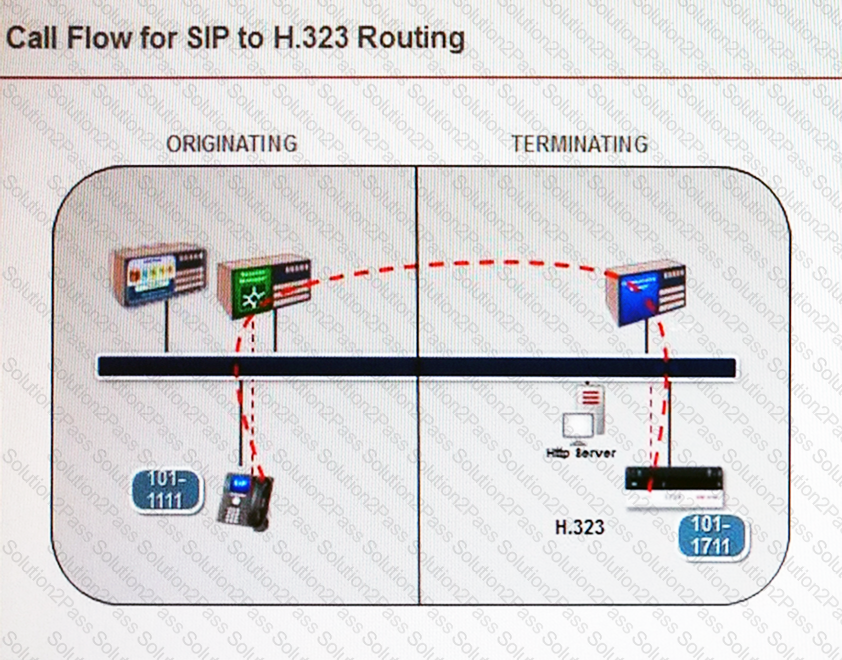72201X Avaya Aura Core Components Support Certified Exam Free Practice Exam Questions (2025 Updated)
Prepare effectively for your Avaya 72201X Avaya Aura Core Components Support Certified Exam certification with our extensive collection of free, high-quality practice questions. Each question is designed to mirror the actual exam format and objectives, complete with comprehensive answers and detailed explanations. Our materials are regularly updated for 2025, ensuring you have the most current resources to build confidence and succeed on your first attempt.
What are three purposes of the Shared Bandwidth Management feature introduced in Avaya Aura® R7.l? (Choose three.)
You are configuring Shared Bandwidth Management for Call Admission Control (CAC) between Communication Manager (CM) and Session Manager (SM).
Which three tasks must you perform to achieve this? (Choose three.)
What information can be found when running the display node-names ip command?
What are the three types of certificates used in the Avaya Aura® server?
Refer to the Exhibit.

When a SIP user calls an H.323 user, at which phase does Avaya Aura® Communication Manager (CM) handle the call processing for each endpoint?
What is the reason why the initial REGISTER request from a SIP endpoint is rejected by Avaya Aura® Session Manager (SM)?
How can you show that a session is actually reaching the Avaya Aura® Media Server (AAMS)?
When comparing two Remote Worker SIP clients, one is an Avaya Communicator soft client and the other is a 96X1SIP hardphone, which statement is true?
You are preparing to enable EASG to provide Avaya Services local and remote access for performing support and system optimization.
What are the three methods to enable EASG during the implementation? (Choose three.)
Avaya Aura® System Manager (SMGR) holds a copy of the Avaya Aura® Communication Manager (CM) database, and it is important that the database is kept identical in both SMGR and CM.
If they ever stop being synchronized, what should be done to get them synchronized again?
A customer called Avaya Support after their telecom administrator was unable to add 50 new telephones for new hires. Avaya Support determined that the number of telephones exceeded the capacity the system could support. Which pre-implementation step was omitted?
What is the correct statement about Interfaces and IP addresses on an Avaya Session Border Controller for Enterprise (SBCE) used for SIP-Trunking and Remote Worker services?
When an Avaya SIP Telephone (AST) makes a call to another AST on the same Avaya Aura® Communication Manager (CM), which of the following statements is true about the use of SIP trunk?
After completing Discipline 2 – Describe the Problem of the 8D Troubleshooting Methodology, what are the next two disciplines to be completed in sequence?
You notice that the Entity_Link between your Session Manager and Communication Manager is down.
From Communication Manager, which four commands can be used to verify the health of this SIP link? (Choose four.)
During installation, the Trust Management Service establishes trust between different entities through the exchange of security certificates. Which three entities does the Trust Management Service establish trust between?
After an Avaya Aura® Communication Manager (CM) upgrade, a customer reported that their SIP telephones were unable to login. What could be the reason for this issue?
A SIP station to SIP station call on a single Feature or Evolution Server uses four signaling legs between CM and SM (not including the initial off-hook imsorig). When does Communication Manager insert the shortcut flag during call processing?
What command is used in Linux to start a previously stopped Communication Manager?
A customer called Avaya Support stating that shortly after some maintenance work was done, they cannot make or receive calls. Which command in Avaya Aura® Communication Manager (CM) can the administrator execute to determine if the H.248 Gateways were placed in a maintenance busy state?
